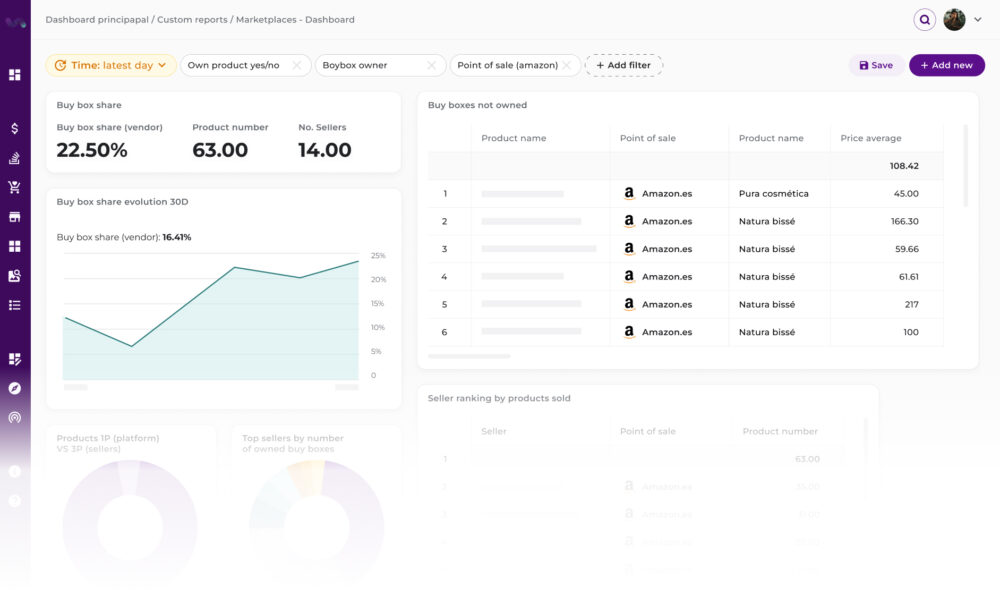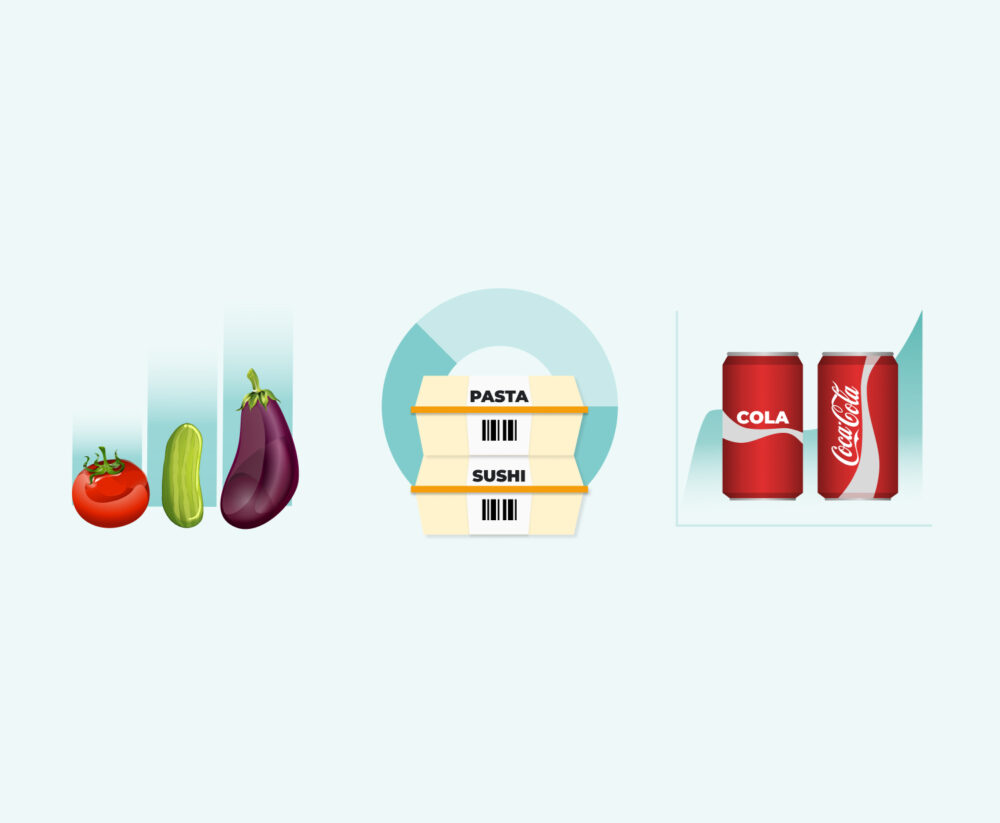Case Study: How Leading Brands Use flipflow to Control Selective Distribution
In the retail world, businesses must make strategic decisions about how and where to sell their products. The way products reach the consumer can directly influence their success in the market. Factors such as product type, brand positioning, competition and consumer behaviour play a key role in choosing the right distribution model.
Some companies seek mass presence to maximize their reach, while others prefer to limit their availability to reinforce their exclusivity. Between these options, there is an intermediate approach that balances reach and control: selective distribution.
Throughout this article, we will analyse what selective distribution is, its main advantages, the challenges it may present and how leading brands use flipflow to control it.
What is Selective Distribution?
Selective distribution involves carefully choosing sales channels, limiting the number of intermediaries to ensure that products are marketed in outlets that reflect the brand’s image. Unlike mass distribution—which prioritizes immediate availability—or exclusive distribution—which restricts access to a single channel—this model allows businesses to select their distributors to maintain brand prestige without sacrificing commercial presence.
This approach is particularly relevant in sectors such as luxury fashion, high-end technology and specialized pharmaceuticals, where the shopper experience and perception of value are decisive. By implementing it, companies not only protect their image but also optimize operating costs and strengthen strategic relationships with qualified retailers.
4 Advantages of Selective Distribution
Adopting a selective distribution strategy offers a number of key benefits that can strengthen a brand’s image, improve relationships with distributors and ensure greater control over the consumer experience. Companies such as Apple, Chanel and Rolex have used this model to reinforce their exclusivity and maintain superior quality standards.
Below, we explore the main advantages offered by this approach:

1. Exclusivity and differentiation
By limiting product availability to certain points of sale, businesses can create a sense of exclusivity that increases brand appeal. This perception of scarcity can justify higher prices and foster greater loyalty among customers seeking unique and differentiated products.
2. Quality control
Selective distribution allows companies to maintain greater control over how their products are presented and sold. By working with a limited number of distributors, it is easier to ensure that quality standards are met in terms of display, customer service and product knowledge. For example, brands like Apple carefully select their authorized distributors to ensure a consistent and high-quality shopping experience.
3. Brand image
By partnering only with retailers that share the brand’s values and aesthetic, companies can reinforce their market positioning. This consistency in presentation helps build a strong and recognizable brand image, which is essential for products that seek to stand out for their quality and prestige. Luxury brands such as Chanel implement this strategy by operating their own boutiques and selecting luxury retailers that reflect their prestige.
4. Improved relationships with distributors
By limiting the number of intermediaries, businesses can establish closer and more collaborative relationships with their distributors. This facilitates communication, training and mutual support, which can translate into greater effectiveness in sales and marketing strategies. Furthermore, a strong relationship with distributors can lead to better market feedback and greater adaptability to customer needs. MediaMarkt or El Corte Inglés are good examples of authorized distributors for leading brands. They are permitted to sell products only through their own stores or websites.
Disadvantages of selective distribution
While selective distribution can offer significant advantages, it also presents certain challenges that businesses must consider before implementing it. From dependence on a small number of distributors to the costs associated with supervising authorized sellers, this model can present limitations that affect the ability to expand and penetrate the market.
Dependence on distributors
By working with a limited number of distributors, businesses can become dependent on them to reach their customers. If a distributor decides to change strategy, close down or fail to meet the agreed standards, the business may face difficulties maintaining its market presence. This dependence can limit the business’s flexibility and increase its vulnerability to external changes.
Limitations in market coverage
By restricting distribution to certain points of sale, some consumers may not have easy access to the products, particularly in geographic areas where there are no selected distributors. This can result in lost sales opportunities and lower market penetration. For example, a luxury brand that only sells in exclusive boutiques in large cities may not reach potential customers in smaller or rural regions.
Costs of conducting exhaustive control
Implementing a selective distribution strategy requires evaluating and controlling distributors. It is essential to ensure that each point of sale understands and adequately represents the brand. This involves resources dedicated to performance monitoring, identifying unauthorized sellers and avoiding channel conflict. Costs can be high, but with a selective distribution control tool such as flipflow, you will be able to monitor and optimize the distribution of your products in real time, as brands such as Havaianas or Natura Bissé already do with us. Click on each brand’s links to access their success stories.
How Leading Brands Use flipflow to Control Selective Distribution
Our platform offers advanced tools for identifying unauthorized sellers on any marketplace, such as Mercado Libre, Miravia or Carrefour, without being limited to Amazon like other market solutions. It is also possible to prevent channel conflict and guarantee a selective distribution strategy aligned with the brand’s objectives.
Several leading brands in the fashion and beauty sectors, such as Havaianas and Natura Bissé, use flipflow in the following ways to have exhaustive control of selective distribution:
Diagnosis and analysis of current distribution
Before making decisions, it’s fundamental to understand how products are marketed across different digital channels. With our powerful tool, these leading brands can:
- Daily monitoring of pricing and promotional activity by different retailers to detect “first-movers”, unauthorized distributors or parallel sales.
- Identify through detailed analysis which brands sell to 3P distributors and detect potential channel conflicts.
- Know who is selling their products, in what quantity and at what prices. This helps them fine-tune their strategies to the maximum.
- Obtain a detailed map of distribution to detect stock leaks or prevent unauthorized sales.
Selective control and action on distributors
Once the sellers have been identified, flipflow allows these brands to take control with advanced tools to optimize their distribution strategy:
- Monitor in real time all sellers on key marketplaces, such as Amazon, Shein, Miravia or Mercado Libre.
- Apply selective distribution rules, define distribution criteria and ensure that only authorized sellers can market their products.
- These brands also evaluate each distributor’s impact on market share and decide where to intervene, strengthening strategic relationships or eliminating problematic distributors.
Price infringement detection and Buy Box control
Finally, they maintain a stable pricing strategy aligned with brand positioning. All this is thanks to exhaustive control over their prices and the Buy Box:
- Automatically detect price deviations on marketplaces or points of sale. For example, when a seller reduces the price below the established minimum.
- Have real-time automatic alerts configured to proactively respond to price infringements.
- Gain visibility on all sellers present in the different Buy Boxes, thanks to the comprehensive dashboards provided by flipflow with real-time information.
- Analyze price trends and non-compliance patterns, to discover which sellers breach pricing agreements most frequently and implement strategies to prevent future infringements.
- Control the Buy Box for products they sell directly as first-party sellers. Thanks to this automated control that informs them of changes in the Buy Box, they can track and avoid 3P sellers.
Conclusion: Control and Strategy for an Effective Distribution Model
Selective distribution is a key strategy for brands seeking to balance exclusivity and market presence. While it offers significant advantages, such as quality control, differentiation and improved relationships with distributors, it also involves challenges that must be considered.
In this context, tools such as flipflow have become indispensable allies for large brands and manufacturers. They allow them to monitor the distribution of their products in real time, detect unauthorized sellers and optimize their commercial strategy. Thanks to our advanced real-time monitoring solution with automatic alerts, companies can ensure that their products are marketed in a way that is aligned with their brand values and objectives, thus guaranteeing effective and sustainable selective distribution over time.




